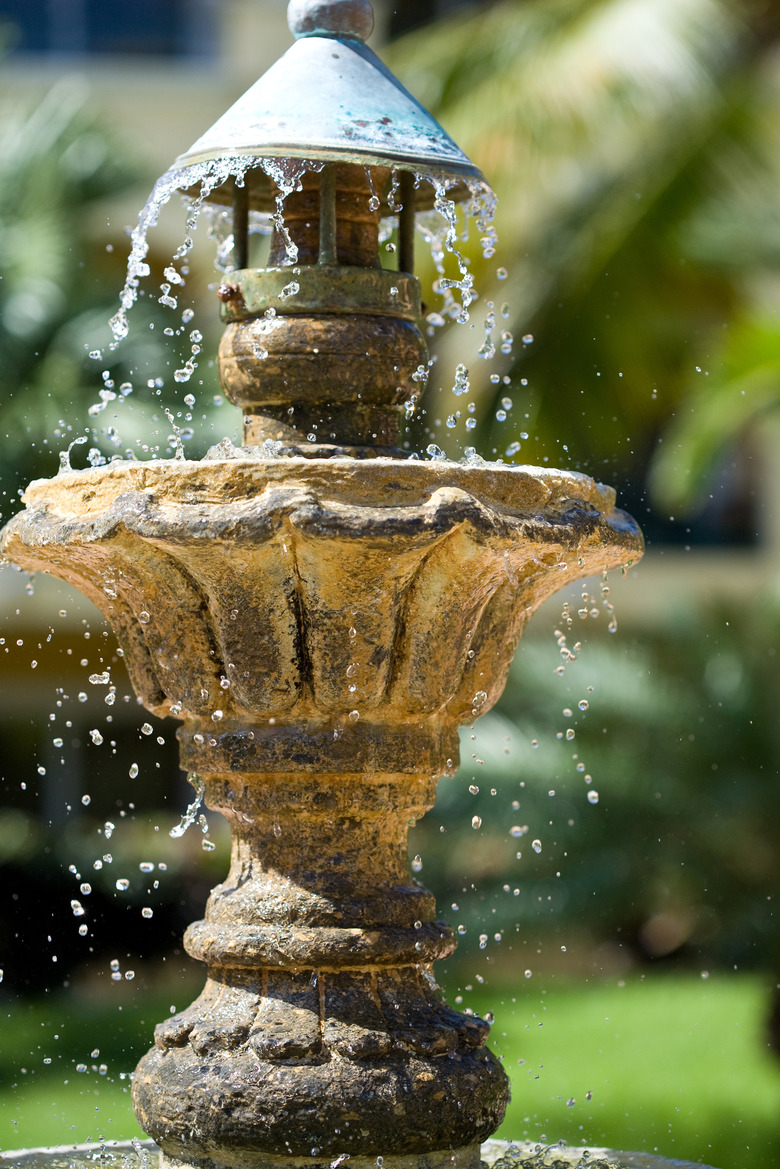Which Is Better: A Resin Or Cement Fountain?
A fountain provides the sound of flowing water that many people find soothing and relaxing. Fountains are available in a choice of styles, designs and materials to add to your garden or landscape. Resin and concrete products offer homeowners a choice of fountains at a more affordable cost than the more expensive options of natural stone or metals. Resin and concrete fountains each have their own advantages to suit a wide range of tastes.
Step 1
Fountains are available in wall, tabletop or free-standing units, for use as an accent or focal point in a garden or landscape. Since the water recirculates in a continuous movement, it does not become stagnant or breed mosquitoes. The fountains are available in a variety of styles to complement your architectural design and style. Outdoor fountains are available in traditional tiered styles, with animals, cherubs, angels or children as accents, or in more contemporary geometric designs. The water may flow, bubble or spray, depending on the style you choose.
Resin Fountains
Step 1
Resin is a lightweight engineered material that can be designed to have the appearance of concrete or stone. The material is easy to mold into a variety of detailed shapes and finishes for use on decks, porches or in gardens. Resin fountains withstand the weather well, but are best suited for climates that do not have hard winter freezes. Their light weight gives you the option of relocating the fountain if you redesign your space. Resin is a durable, long-lasting material that is more economical than other materials.
Step 2
- Fountains are available in wall, tabletop or free-standing units, for use as an accent or focal point in a garden or landscape.
- The material is easy to mold into a variety of detailed shapes and finishes for use on decks, porches or in gardens.
Concrete Fountains
Step 1
Concrete fountains, sometimes referred to as cast stone, are made of white or gray cement that is poured into casts producing a wide range of designs and styles. The material can be finished to resemble natural stone. Although concrete is durable, it is susceptible to cracking and chipping from freezing and thawing. Concrete fountains are less expensive than natural stone products, but because of the expense of transporting them, may be more expensive than resin fountains.
Maintenance
Step 1
Concrete fountains are subject to damage from rain and pollution. Apply a water sealer each year to protect the surface. Regular maintenance keeps both resin and concrete fountains in good condition. Check the water level regularly to prevent damage to your pump. Check the pump and change the water three or four times each year, or as the manufacturer recommends. Water from outdoor faucets is suitable for use in all outdoor fountains, but the addition of algaecide keeps the water fresh. In climates with hard freezes, both resin and concrete fountains are subject to damage. If possible, bring the fountains indoors for the winter. Resin fountains have an advantage in these climates since they are lightweight and portable. If possible, remove the bowl of a concrete fountain and turn it upside down or bring it indoors. Covering a concrete fountain with plastic will keep water out of the porous material and reduce the possibility of cracking from freezing temperatures. At the minimum, drain both resin and concrete fountains and remove the pumps.
Step 2
- Concrete fountains, sometimes referred to as cast stone, are made of white or gray cement that is poured into casts producing a wide range of designs and styles.
- Water from outdoor faucets is suitable for use in all outdoor fountains, but the addition of algaecide keeps the water fresh.
